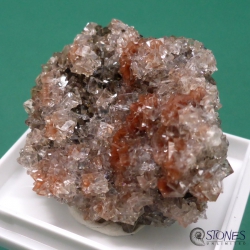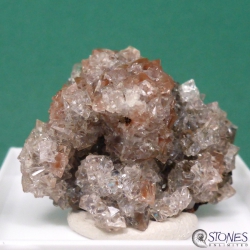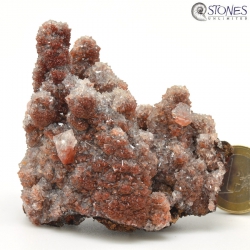Calcite
Formela: CaCO3 Hardness: 3
Calcite is a carbonate mineral and the most stable polymorph of calcium carbonate. Other polymorphs of calcium carbonate are the minerals Aragonite and Vaterite. Aragonite will change to Calcite over timescales of days or less at temperatures exceeding 300 °C and Vaterite is even less stable. Calcite is derived from the German Calcit, a term coined in the 19th century from the Latin word for lime, calx (genitive calcis) with the suffix -ite used to name minerals. It is thus etymologically related to chalk. When applied by archaeologists and stone trade professionals, the term Alabaster is used not just as in geology and mineralogy, where it is reserved for a variety of Gypsum; but also for a similar-looking, translucent variety of fine-grained banded deposit of Calcite
Calcite is a common constituent of sedimentary rocks, limestone in particular, much of which is formed from the shells of dead marine organisms. Approximately 10% of sedimentary rock is limestone. It is the primary mineral in metamorphic marble. It also occurs in deposits from hot springs as a vein mineral; in caverns as stalactites and stalagmites; and in volcanic or mantle-derived rocks such as carbonatites, kimberlites, or rarely in peridotites.
JoomShopping Download & Support






